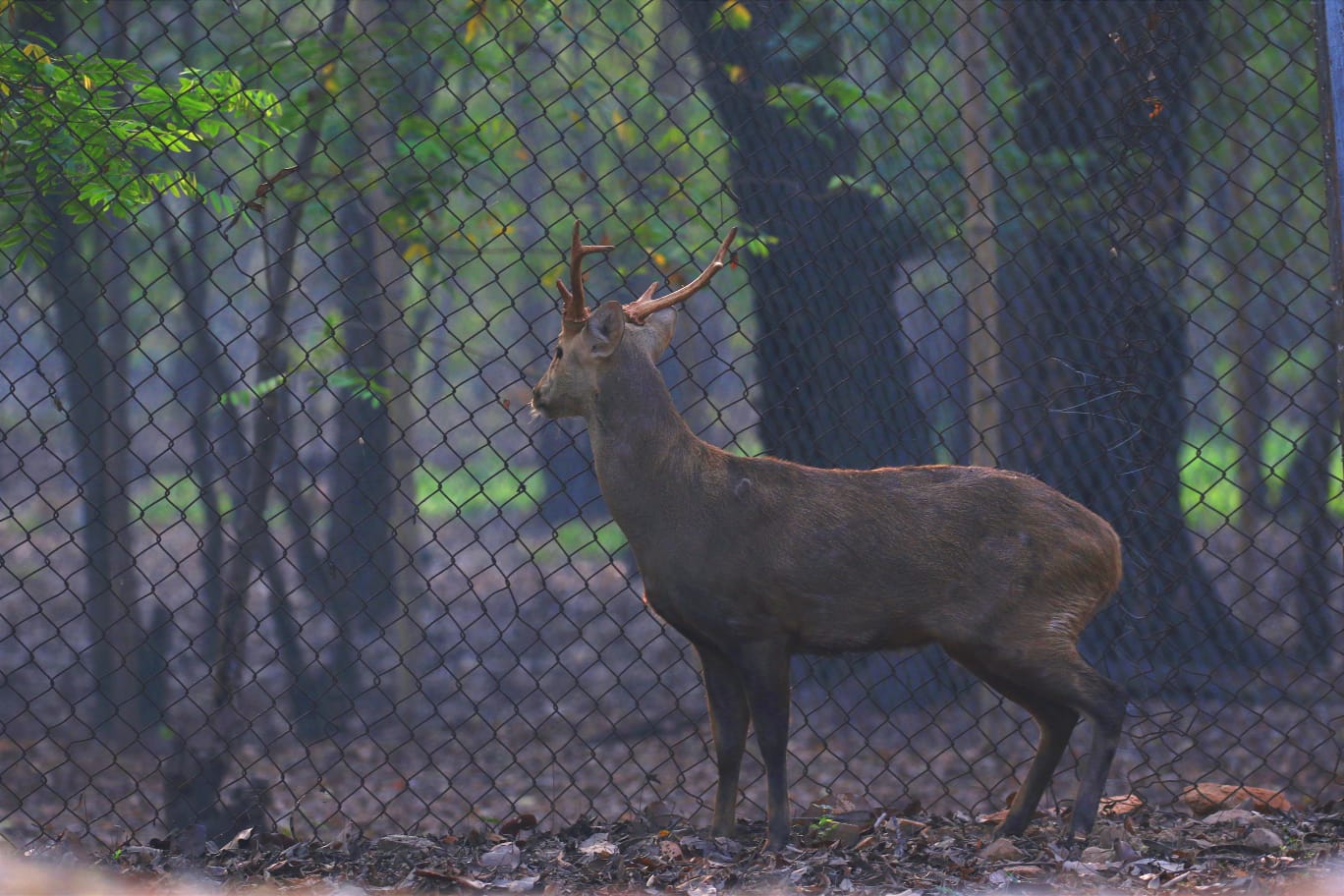Sambalpur: In a noteworthy development, the Hirakud Wildlife Division authorities have successfully transferred eight Hogdeer, also known as Kuji Harina in Odia, from Nandankanan Zoo to Sambalpur Zoo as part of their ongoing animal exchange program. The consignment, comprising four males and four females, arrived today, enriching the diverse fauna of Sambalpur Zoo.
The Hogdeer, scientifically classified as Indochinese Hogdeer, is primarily found in Southeast Asia, the US, and Australia. In India, it is commonly sighted in North India. Known for its distinctive running style with a low-hung head, the Hogdeer boasts a solidly built body with short legs, captivating viewers with its unique appearance. The animal’s skin color undergoes changes with the seasons, and males are distinguished by their antlers. Emitting a long whistle during dawn and dusk, the Hogdeer has a lifespan of approximately 20 years.
Listed under Schedule-3 of the Wildlife Protection Act of 1972 in the endangered category, this exchange program aims to contribute to the conservation efforts of such species. In return, Nandankanan Zoo will receive five Sambar (two males and three females) from Sambalpur Zoo, which already has a sufficient Sambar population.
Before being displayed for visitors, the newly arrived Hogdeer will undergo a one-month quarantine period to ensure their well-being. Two months ago, Hirakud Wildlife Division authorities brought eight Blackbucks from Nandankanan Zoo, which have thrived in their new environment and become popular among visitors. Additionally, the authorities have introduced a Nocturnal House, an open Orchidarium, and a Rose Garden during the 2023-24 financial year.
With a variety of animals such as leopards, bears, Sambar, Chowsingha, deer, pythons, peacocks, and other colorful birds, Sambalpur Zoo has become a hub of biodiversity. The new Master Plan for the zoo outlines the introduction of 30 additional animal varieties in the coming years, including tigers, nilgai, bison, wolves, wild dogs, and more, enhancing the zoo’s commitment to wildlife conservation and education.





